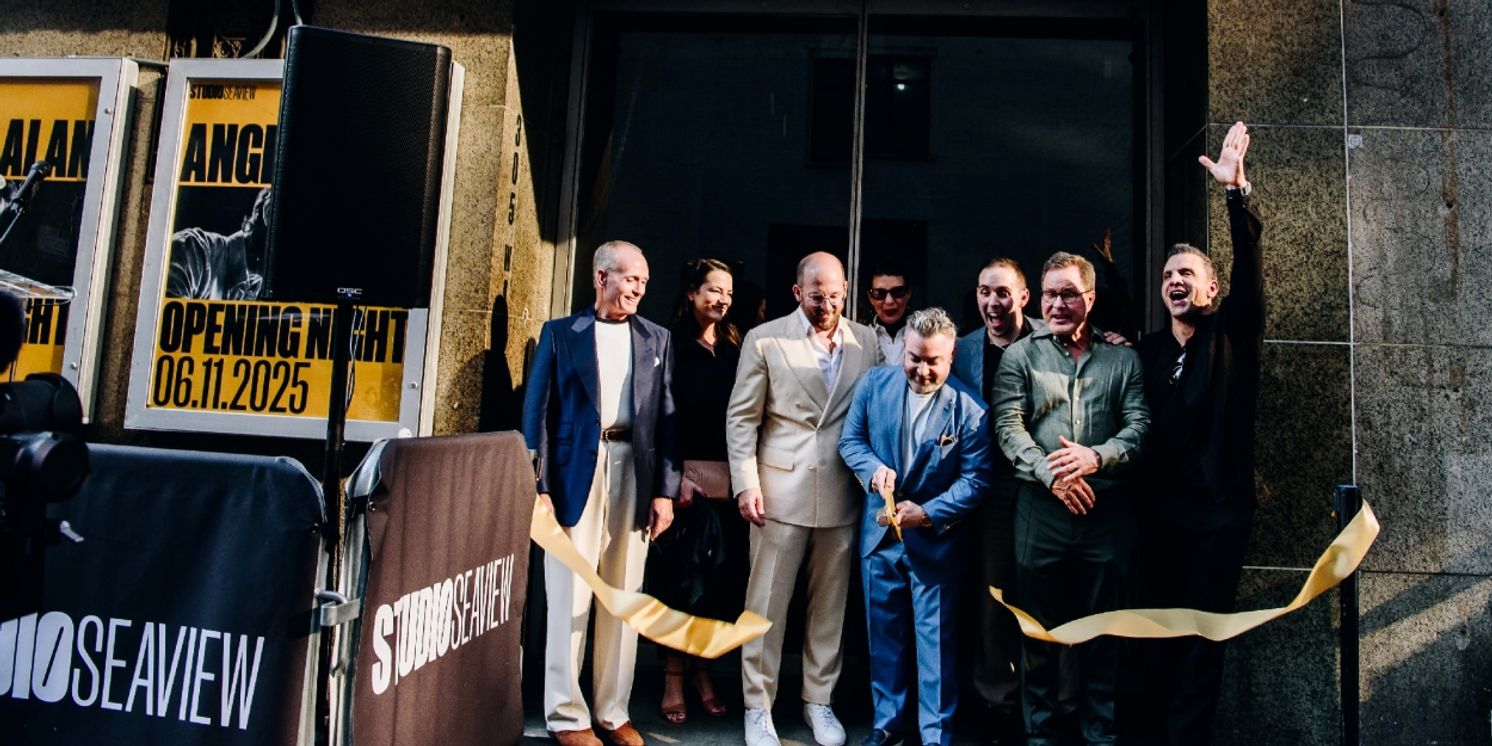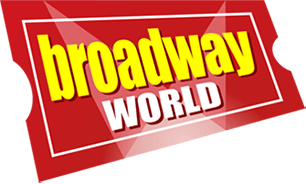A History of Off-Broadway Venues
Studio Seaview officially launched last week with Angry Alan.

Do you have a burning Broadway question? Dying to know more about an obscure Broadway fact? Broadway historian and self-proclaimed theatre nerd Jennifer Ashley Tepper is here to help with Broadway Deep Dive. BroadwayWorld is accepting questions from theatre fans like you. If you're lucky, your question might be selected as the topic of her next column!
Submit your Broadway question here!
This time, the reader question was: What is the history of Off-Broadway theater buildings?
Second Stage Theatre’s 43rd Street off-Broadway house, right near 8th Avenue, recently changed hands and is now the home of Studio Seaview. Seaview’s first production in the space is Angry Alan, starring John Krasinski. They have renovated and updated the space since Second Stage switched off-Broadway locations to now present shows at the Signature. But one thing about the theater at 305 West 43rd Street has not changed and never can. The box office was once a bank vault!
When theatergoers enter on 43rd Street and pick up their tickets, they are standing by the thick cement and metal that once guarded the inner sanctum of Manufacturers Trust Company, once one of the United States’ largest banks. Built in 1927, the art deco building’s facade once proudly led, through an entrance that was then on 8th Avenue, to a glorious banking hall that later passed into the hands of the State Street Bank. In 1999, when Second Stage moved in, they transformed the banking hall into the auditorium space. If you look carefully, you can still see signs all over the building of its banking past. In fact, Manufacturers Trust Company built multiple New York City edifices that are still in existence and serve different functions now but, like the bank vault-turned-box-office, have physically permanent elements pointing to the past.
Since 1999, many great Off-Broadway productions have played the former Manufacturers Trust Company banking hall, courtesy of Second Stage, from Metamorphoses (2001) to The 25th Annual Putnam County Spelling Bee (2005) to Next to Normal (2008) to Dear Evan Hansen (2016). Studio Seaview, formerly Second Stage’s Tony Kiser Theatre isn’t the only current Off-Broadway house to previously have been a bank. The Daryl Roth Theatre in Union Square, home of two off-Broadway venues, was once the Union Square Savings Bank, a landmarked 1905 structure.
While the large majority of Broadway theaters opened originally as live performance venues, Off-Broadway does not share this trait. The majority of our Off-Broadway theaters began their lives as entirely different kinds of buildings.
Several of our most major Off-Broadway spaces were once churches, including The Westside Theatre and Atlantic Theatre Company’s main space. The Westside, where Little Shop of Horrors has been playing with a revolving door of attention-grabbing Seymours and Audreys since 2019, contains both an upstairs and a downstairs space and typically hosts two shows at once. From the exterior of the Westside, theatergoers can see clearly that it was once the Second German Baptist Church, even spotting the 1890 cornerstone that translates to “Christ is the Cornerstone”. From 1890 until the 1960s, the German Baptist Church made its home in the heart of the dangerous Hell’s Kitchen area.
In the 1960s, the building took a major turn, and was converted into a nightclub, ironically called Church, where a mural of Satan was installed above what used to be the altar. The decor at Church was so offensive that the Archdiocese of New York tried to have it shut down. In 1969, Church became Sanctuary, a gay discotheque known for extremely wild nightly behavior as well as a revolving door of celebrity visitors from Liza Minnelli to the astronauts who landed on the moon. Sanctuary appears in the 1971 Jane Fonda film Klute. The disco was shut down when its orgy sessions and drug-taking extended once too often to neighboring buildings.
In 1973, the building briefly became a methadone clinic, before starting its life as an Off-Broadway house the following year. In 1974, the Chelsea Theater Center, a non-profit company opened the West Side Arts Theatre in the space. The company would fold a decade later but the building has been a theater ever since. In the past 50+ years, its productions have included, in its upstairs space that currently houses the Little Shop revival, Really Rosie (1980), March of the Falsettos (1981), ‘night Mother (1984), And The World Goes ‘Round (1991), and the long-running I Love You, You’re Perfect, Now Change (1996) which racked up 12 years of performances. Meanwhile downstairs at the space that was once both a church and a nightclub named after a church, shows have included Vanities (1976), Sister Mary Ignatius Explains It All For You/ The Actor’s Nightmare (1982), The Vagina Monologues (1999) which ran for over three years, the memorably titled My Mother’s Italian, My Father’s Jewish & I’m In Therapy! (2006), and Love, Loss, and What I Wore (2009).
Meanwhile, downtown, another church converted to theatrical use can be found as the main home of Atlantic Theater Company. Atlantic started in 1985 in the former St. Peter’s Episcopal Church on 20th Street between 8th and 9th Avenues. Built in 1854, the church was the first Gothic house of worship in Manhattan. Its iron fence, still intact today, dates back to the 1780s when it surrounded an even earlier church, which was attended by both George Washington and Alexander Hamilton. This Trinity Church fence moved as Trinity moved, and its third home was here in the 1830s.
Theatergoers at Atlantic Theater Company today open this historic fence and enter the theatrical space, amidst which one can still see a characteristic sloped church ceiling as well as design elements on the theater’s walls that point to its history. Those seeing shows from The Beauty Queen of Leenane (1998) to Spring Awakening (2006) to The Band’s Visit (2016) to Kimberly Akimbo (2021) have sat where St. Peter’s Episcopal Church worshippers once did.
Fascinatingly, there are a few Off-Broadway theaters with history as Broadway spaces! The New Victory, in the heart of 42nd Street, has been an inviting home for family audiences and children’s theater since 1995. When the new 42nd Street emerged in the 1990s, transforming blue movie theaters and decrepit stores into a shiny new commercial landscape, what was once the Theatre Republic became the New Victory. Since the Theatre Republic was built in 1900, it is older than any of our current Broadway houses, the oldest of which were erected in 1903. In fact, it is the oldest operating theater in New York! Theatre impresario Oscar Hammerstein (i), grandfather of the writer Oscar Hammerstein, built the Theatre Republic but soon after turned it over to fellow impresario David Belasco. The house on 42nd Street was briefly called the Belasco before the eccentric producer built a new Belasco Theatre nearby on 44th Street and the theater’s name changed back.
The current New Victory, whose next mainstage production is a kid-friendly adaptation of Snow White, only operated as a live Broadway performance venue from 1900 to 1930. During that time, one of its tenants was the long-running hit play Abie’s Irish Rose, which played for over five years in the 1920s. In 1930, as the Great Depression impacted theatre viability, burlesque king Billy Minsky took over the space. Minsky’s Burlesque had its home at 209 West 42nd Street for the next decade before the space became a movie theater. In 1972, it became the first X-rated adult movie theater on 42nd Street. More than two decades later, it was heavily renovated and converted into the family theater venue it is today.
Why isn’t the New Victory still a Broadway house? When the Theatre Republic opened in 1900, the space seated over 1000 patrons. These days, the New Victory has a capacity of 499, qualifying it as an Off-Broadway space rather than a Broadway one. Given the current programming of the New Victory, the space would not be able to function as a Broadway house, given the union requirements, contractual differences, and financial level that would come along with the distinction. But elements from the past life of the theater as a Broadway house can still be spotted all over the New Victory, including the bee motif on the seats that David Belasco installed in tribute to the first letter of his last name. While it might sound like children were never in the space until it began its life as the New Victory in the 1990s, in fact, children did once visit The Paradise Roof Garden that was on top of the building in the early 20th century, where they could see a recreated Dutch village, including real ducks, chickens, and cows whose milk could be sampled.
Comments

|
Powered by
|
Videos


